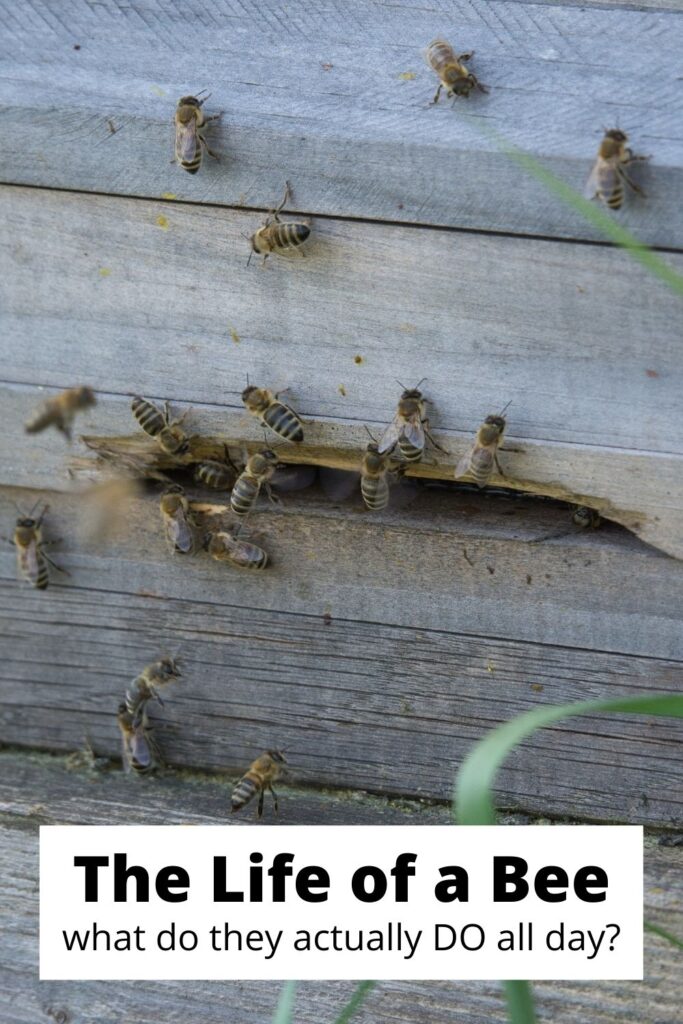Save the pollinators is becoming a popular rallying cry amongst environmentalists. Have you ever wondered WHY? What do honeybees do that makes them so vital to our society? Bees are dying in record numbers, and we don’t really know why. Why are bees so important to the environment? And as a homeowner, how can you help?
Without bees, our food supply is in trouble. A third of the food that we eat is pollinated by honey bees, so if they die out, we could be looking at a serious food crisis.
We can all help protect honey bees by doing our part to keep them healthy and safe. As homeowners, there are some things we can do right now to make our yards more bee-friendly. You can plant a garden full of bee-friendly flowering plants, or provide a water source for bees. You can also install a beehive in your yard, or become a beekeeper yourself!
In this article, we will explore a bit about the honey bee and how YOU as a homeowner can protect these vital insects.
Posts feature partner companies & may be sponsored. Post contains affiliate links & I will be compensated if you make a purchase after clicking on links. As an Amazon Associate I earn from qualifying purchases.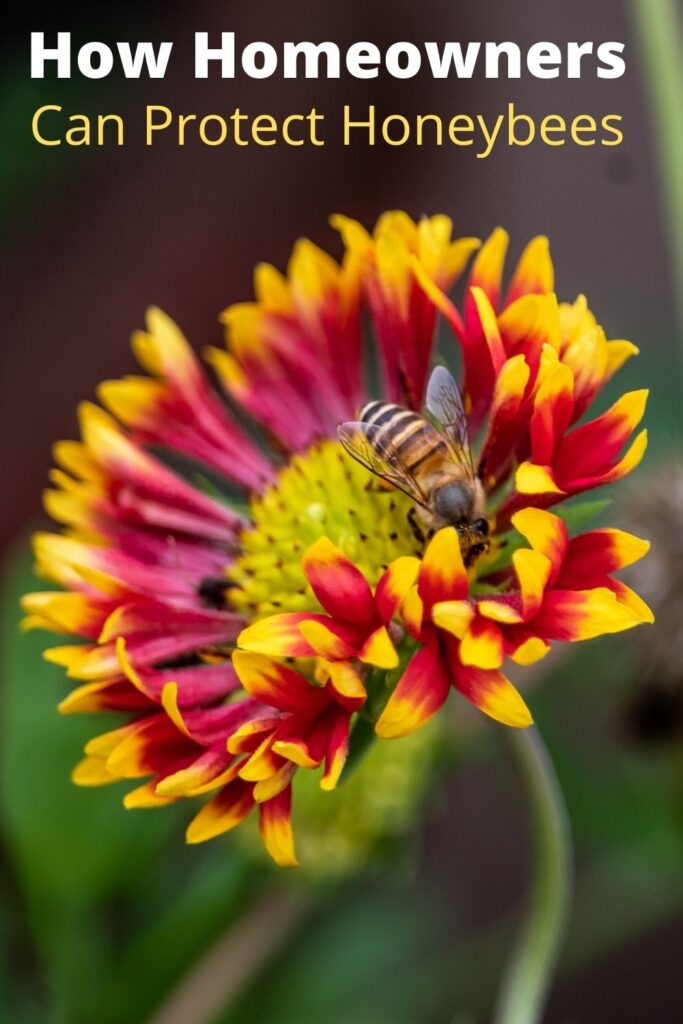
Table of Contents
The importance of pollinators
So what do honeybees DO and why are bees so important to the environment? Honey bees are a vital part of our ecosystem. They pollinate our food crops as well as wild plants out in nature. One out of every three bites of food that we take is thanks to pollinators like bees!
Bees are also responsible for $15 billion dollars worth of crops in the United States each year. Without these pollinating insects, our global economy crashing would be of little concern since we would starve to death.
10 interesting facts about honey bees
So, you think you know everything there is about bees, right? They produce honey and if we annoy them, they offer painful stings in return. There are a ton of bee facts that you might NOT know. Here is a mini honeybee fact sheet for you:
- Bees are not born knowing how to make honey. The older bees have to teach the younger bees.
- A bee will visit 50-100 flowers during a collection trip.
- Bees can fly up to 15 miles per hour in their natural environment.
- Bees communicate with each other by doing a special dance.
- Honeybees never sleep! They take turns guarding the hive.
- A bee’s wings flap 11,400 times per minute.
- Bees have been around for over 30 million years.
- There are 20,000 bee species in the world.
- The average lifespan of a worker bee is just 40 days.
- Bees are attracted to the color blue more than any other color. See my list of blue flowers farther down!
✯Don’t want to miss the next post?✯ Follow Turning the Clock Back on Facebook | Twitter | Pinterest Or join the private Facebook group for simple tips on going green!
What do bees do all day, anyhow?
So, what do honeybees do all day, anyhow? I’m going to give you a very brief rundown on the life of a bee. I promise it will be brief!
First off, this refers to bees that live as social insects like the beloved honeybee. There are solitary bees that live their whole lives alone, however, the ever-popular honeybee lives in bee colonies with a very specific social structure.
A day in the life of a worker bee:
The female worker bees are responsible for collecting nectar and pollen from flowers. Yes, they are all female. They also build and repair the hive, care for the larvae, and guard the hive entrance. They are the ones that pollinate plants, carry pollen from plant to plant to help plants grow, and allow our garden to be a food source for our families.
They are also called forager bees (since they collect nectar and pollen) and will visit 50-100 flowers during a collection trip. They store the nectar in a special stomach and bring it back to the hive. The nectar is then passed to other bees who will turn it into honey.
Pollen is used to feed the larvae. It is also gathered and stored in what are called pollen baskets, which are located on the bee’s hind legs.
When worker bees aren’t out collecting nectar and trying to carry pollen around, they are busy building wax comb, which is used to store the honey and pollen. They also spend time fanning their wings to keep the hive cool.
A day in the life of a queen bee:
The queen’s job is to lay eggs. There is only one queen in a hive and she can lay up to 2,000 eggs per day! That’s a lot of responsibility.
The queen is the only bee in the hive that can mate and lay eggs. She will go on a mating flight, during which she will mate with up to 20 different drones (male bees). Once she has mated, she will store the sperm in a special sac called the spermatheca. She will use this sperm to fertilize her eggs for the rest of her life.
The queen is the largest bee in the hive. She can live for up to 5 years. When it is time to replace her or branch out into creating other colonies, the worker bees will create a new queen by feeding a larva a special diet of royal jelly.
Worker bees place the potential future queens in separate cells in the hive. The first larvae to mature will become the new queen. Lucky her!
A day in the life of a drone:
The drones are the male bees in the hive. Their only job is to mate with the queen. Once they have mated, they die. Poor little buggers.
Drones do not have stingers (so those bee stings you get are from the females) and they cannot collect nectar or pollen. They also cannot build wax comb.
During the winter, the drones are kicked out of the hive because they are a drain on resources. The drones will die of cold or starvation. The male drones sole purpose is to fertilize the queen’s eggs.
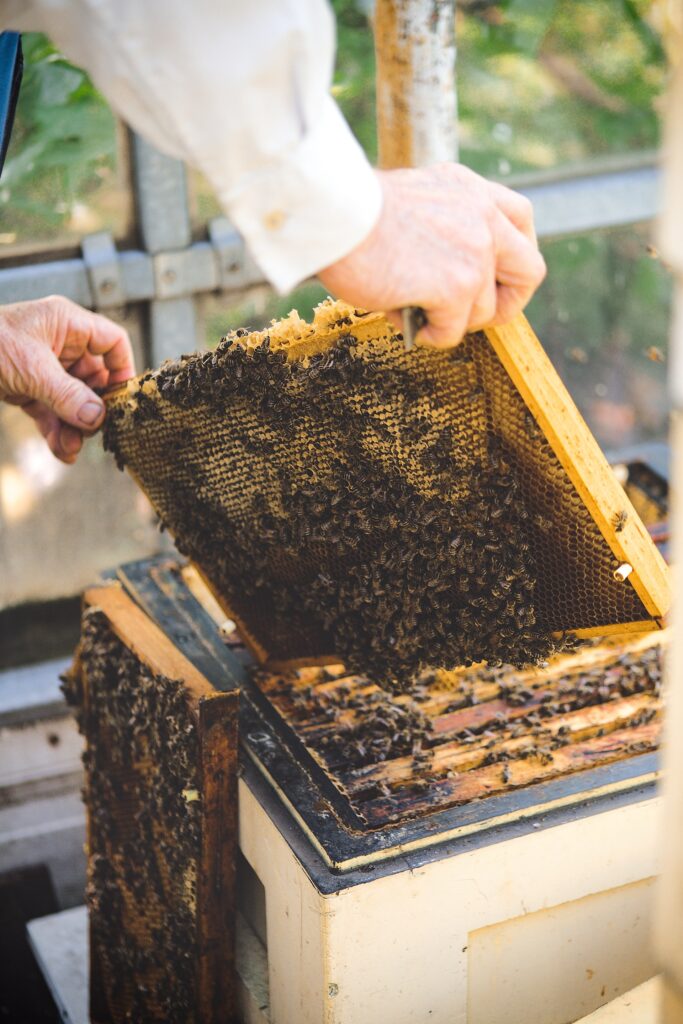
How many species of bees make honey?
Worldwide, there are an estimated 20,000 species of bees. However, how many of those actually make the honey we enjoy in our tea and on our homemade granola?
How many bees are there in the world? The answer might surprise you… Did you know that out of all the species of honeybees only ONE produces honey?
Truly astounding. There is only one species of bee that makes honey, and that is the European honey bee. This species was introduced to North America in the 1600s, and they are the ones that we see today.
While there are other species of bees in North America, they do not make honey like the European honey bee. Bumble bees, mason bees, and many other types of bees are common in North America, and they are pollinators, but they do not make honey.
Honey bees vs Native Bees: What’s the difference?
While honeybees are awesome since they give us delicious honey, there are a lot of different bee species out there in our yards. Honeybees came from Europe oh so long ago. So, while those honey bees live here NOW, they are not actually native bees.
In North America, we have what are called native bees. This basically means that they are amazing insects that have been here as far back as humans can remember. Or record in our written records.
Native bees include bumble bees, carpenter bees, leaf cutter bees, and mason bees. Native bees don’t make honey like the European honey bee, but they are amazing pollinators.
So, remember that just because they don’t spend their whole life making honey, native bees are incredibly important to help plants survive and produce fruit and other crops for us to eat.
Honey Bee Decline
What is the biggest problem for bees? That is a complicated question but most of it comes down to humans, sadly.
Humans have changed the landscape so much that it is hard for bees to find food. We have also introduced a lot of insecticides and pesticides that are harmful to bees.
Climate change is also making it harder for bees to survive because they need a specific temperature to make honey.
How badly are bees endangered? The International Union for Conservation of Nature (IUCN) lists 16 species of bees as vulnerable, 18 as endangered, and 9 as critically endangered globally. That doesn’t sound good.
The vast majority of bees can’t be replaced by just building hives for them. And the number of beekeepers has also declined significantly. The number of managed honey bee colonies in the US has been declining since the 1940s.
In fact, from 1947 to 2005, the number of managed honey bee colonies in the US decreased by 60%. So, things aren’t looking good for this very vital little social insect.
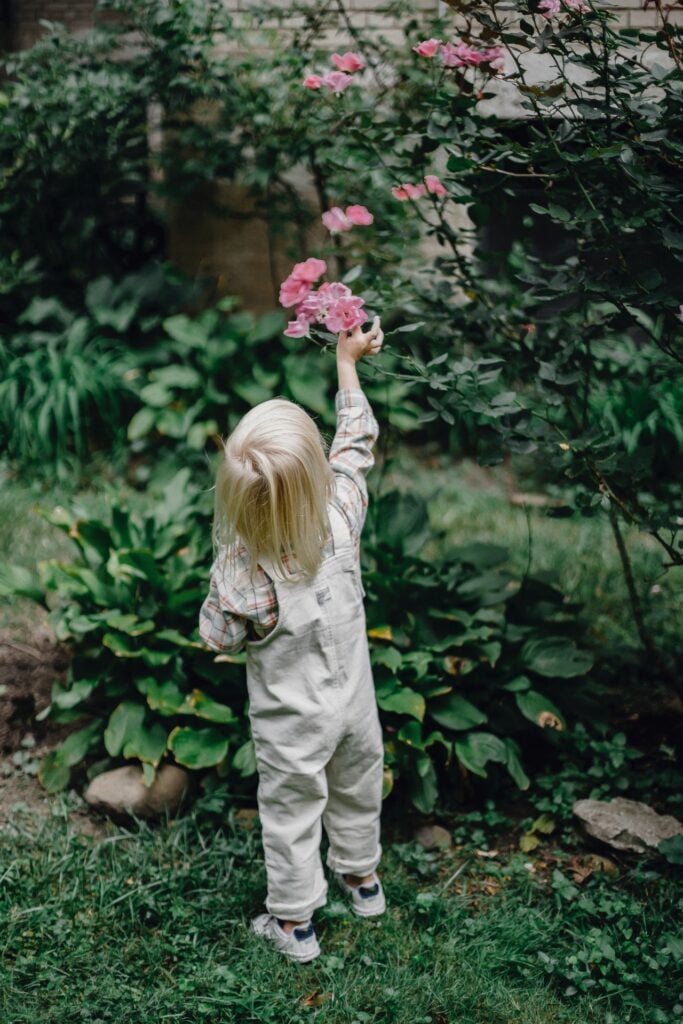
What can homeowners do to protect pollinators like bees?
So, as a homeowner, what can you do to help honey bees thrive in your little neck of the woods?
Plant a bee-friendly garden! This is probably the best thing you can do to help pollinators.
Bees need two things: food and shelter. By planting a bee-friendly garden, you can provide both of those things. But, it doesn’t stop there. Here is a list of 10 action items that YOU can do this spring to save the bees:
Plant a Bee Garden
The best thing you can do to help pollinators is to plant a bee garden. By planting flowers that bees like, you can provide them with the food they need to survive.
Make sure to include a variety of plant species in your garden so that the bees have something to eat throughout the growing season.
Check out my post about perennial plants that attract pollinators. And if you love blue flowers as much as honeybees do, here are a few blue flowering plants to add to your pollinator garden:
- ‘Blue Giant’ glory-of-the-snow (Chionodoxa forbesii)
- ‘Blue Pearl’ crocus (Crocus chrysanthus)
- Blue globe allium (Allium caeruleum)
- Borage (Borago officinalis)
- ‘Blue Glow’ globe thistle (Echinops bannaticus)
- Bachelor’s button (Centaurea cyanus)
- ‘Black and Blue’ salvia (Salvia guaranitica)
- ‘First Choice’ bluebeard (Caryopteris x clandonensis)
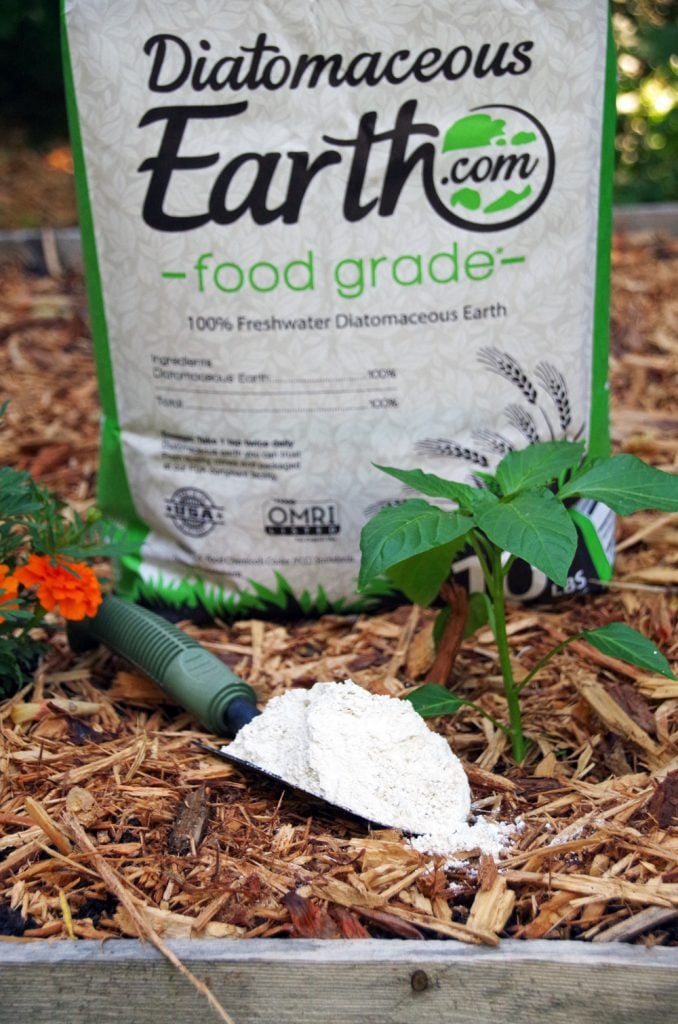
Go Chemical-Free for Bees
Another way to help pollinators is to avoid using chemicals in your yard and garden.
This includes insecticides, herbicides, and fungicides. Many of these products are toxic to bees and other pollinators. As honey bees collect pollen, they are exposed to every chemical you use on your lawn.
If you must use them, do so at night when the bees are not active. And always follow the directions on the label.
If you are looking for an alternative to chemicals, consider using diatomaceous earth, neem oil, or beneficial insects. Read my post about how to use diatomaceous earth safely before you start.
Join a Global Movement to Help the Bees
There are many organizations working to save the bees. One way you can help is by joining one of these organizations or supporting their efforts.
Here are a few organizations that are doing great work to help pollinators:
- The Xerces Society for Invertebrate Conservation
- Pollinator Partnership
- Friends of the Earth
- The Honey Bee Conservancy
- Plant with Pollinators in Mind
Plant Trees for Bees
Trees are an important part of the ecosystem and honey bees actually love tree flowers.
When you plant trees, make sure to include a variety of species. This will provide the bees with the food they need throughout the year.
You can also help by planting native trees. Native trees are adapted to the local climate and provide the bees with the food they need. They tend to be healthier and more resistant to local disease than non native trees.
Check out the Arbor Day Foundation for a list of bee-friendly tree species.
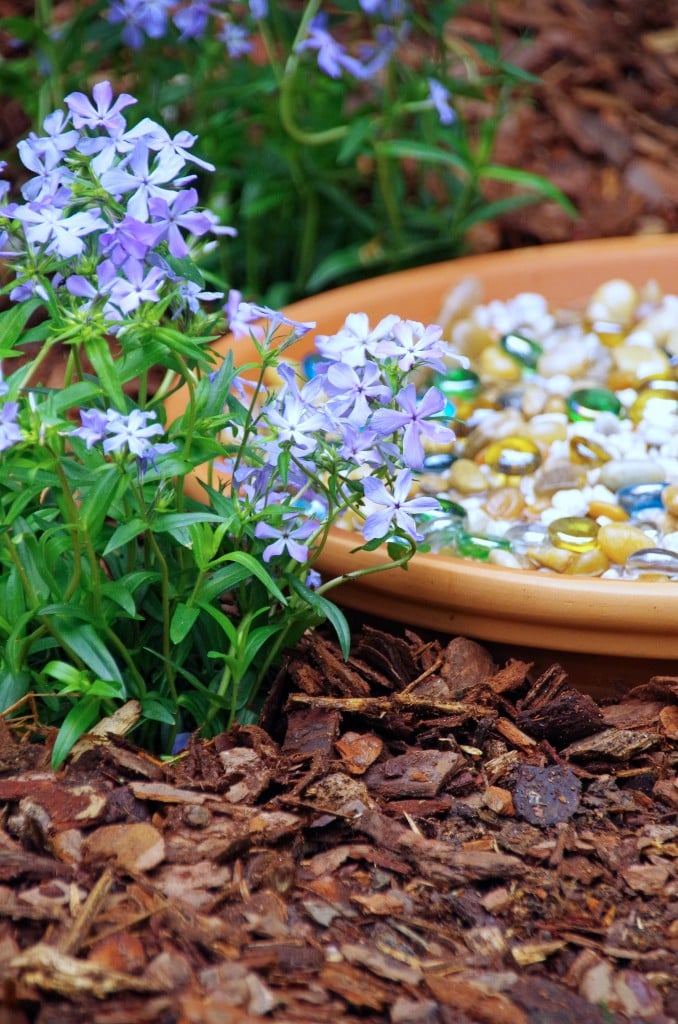
Create a Bee Bath
Bees need water to survive. You can help by creating a bee bath in your yard.
A bee bath is simply a shallow dish of water that is easy for bees to access. Make sure to include some rocks or sticks for the bees to land on.
You can also plant native plants near your bee bath. This will provide the bees with a place to drink and a place to find food. Check out my honeybee watering station for an easy DIY bee bath tutorial.
Leave Some Areas wild
Bees need a place to nest and build their hives. You can help by leaving some areas of your yard wild.
This means avoiding the urge to tidy up every last weed. Instead, let some areas grow wild. This will provide the bees with the shelter they need. And hey, less yard work for you, right?

Build Homes for Native Bees
There are many species of native bees in North America. You can help these bees by providing them with a place to nest.
You can build a bee house or buy one online. Make sure to place your bee house in a sunny spot and away from predators like birds.
Check out my post about how to make a mason bee house for more information about building a bee house for your yard.
Teach Tomorrow’s Bee Stewards
One of the best things you can do to help pollinators is to teach others about them.
You can start by teaching your family and friends about the importance of bees. Then, you can reach out to your community and share what you have learned.
There are many ways to get involved with bee education. You can give a presentation at your local library, start a bee club for kids, or write articles like this one.
You can also volunteer with organizations like The Bee Conservancy or The Xerces Society. These organizations offer many opportunities to get involved with pollinator education and conservation.
No matter what you do, make sure to spread the word about the importance of bees. We need to work together to save these important pollinators. Check out a few of these cute books for kids about honeybees. Or, check out my Etsy shop for some honey bee printables to use with your own kids.
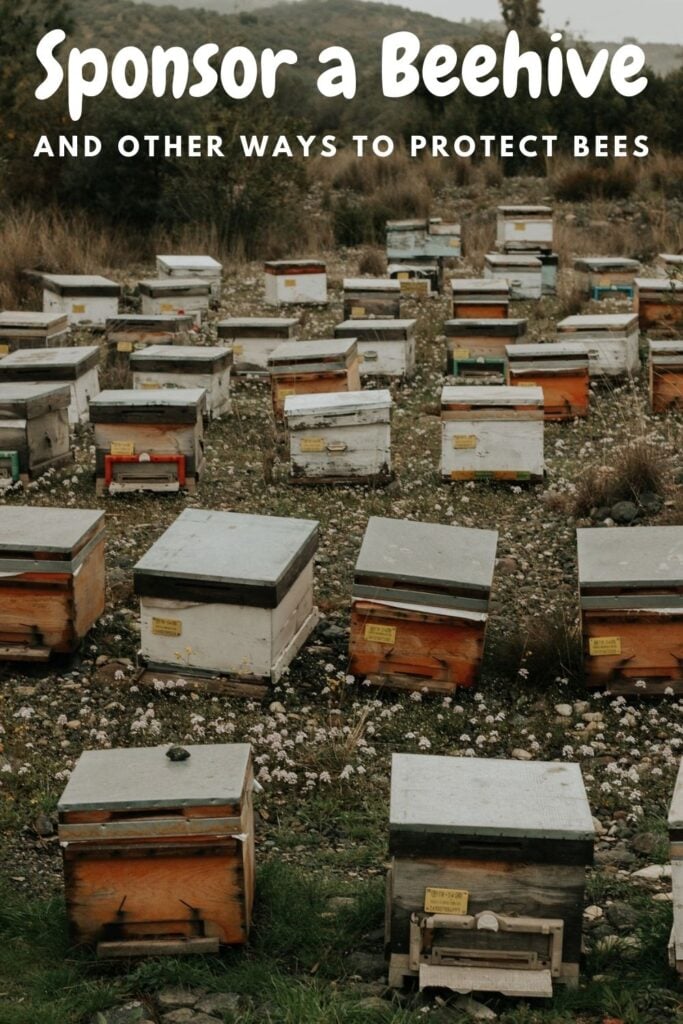
Sponsor a Beehive
If you really want to help the bees, you can sponsor a beehive.
Hives can cost upwards of $300. By sponsoring a hive, you are providing the bees with a safe place to live and pollinate.
You can find beehives for sale online (check out this beehive box starter kit) or at your local beekeeping store if your family wants to learn how to be beekeepers.
If beekeeping isn’t your thing, check out The Bee Conservancy and make a donation to sponsor a hive.
Protect the Planet
Climate change and habitat destruction are major factors causing the collapse of honeybee populations.
You can help by doing your part to protect the environment. This means reducing your carbon footprint, recycling, and using less water. (check out my recycling resources to get started!)
You can also help by supporting organizations that are working to protect the environment. Check out my Etsy store for environment worksheets for kids to encourage a new generation of climate warriors.
Host a Fundraiser
One way to raise money for bee conservation is to host a fundraiser.
You can do this by hosting a bake sale, car wash, or yard sale. You can also ask your family and friends to make donations to your chosen organization.
Another great way to raise money is to hold a raffle. You can ask local businesses to donate items for your raffle. Then, sell tickets and give the money to your chosen organization.
You can also host an online fundraiser. There are many platforms that you can use, such as GoFundMe or Crowdrise.
No matter how you choose to fundraise, make sure to choose a reputable organization that is working to save bees.
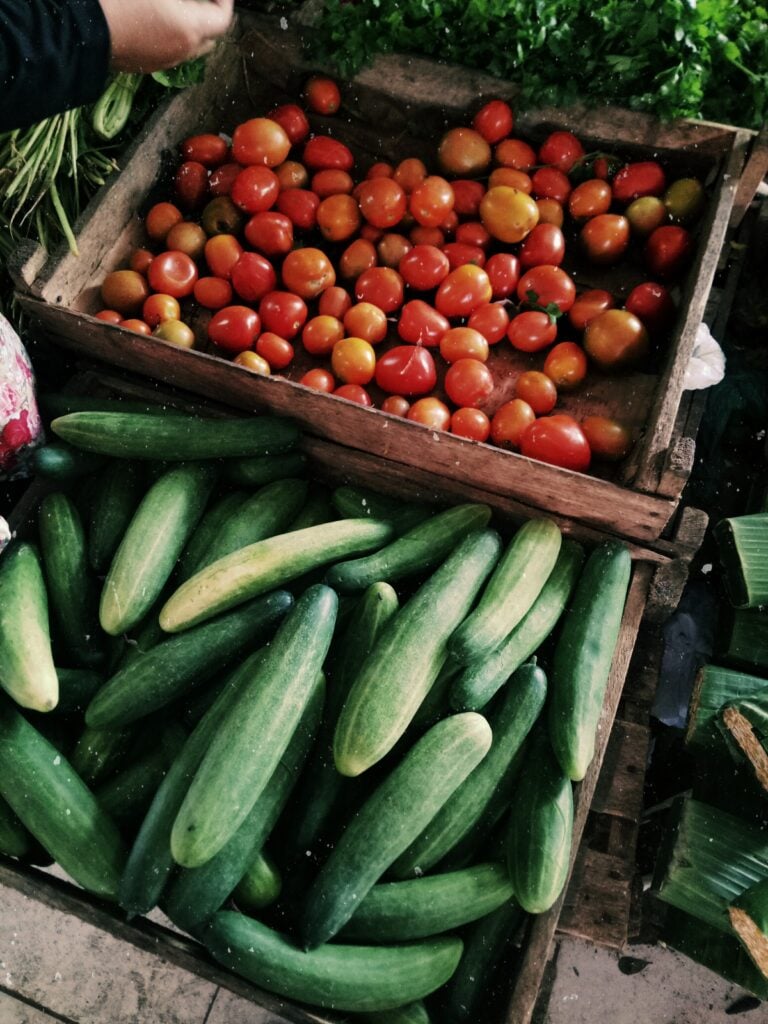
Support Organic Farmers
You can also help protect honey bees by supporting organic farmers. When you buy organic food, you are helping to reduce the use of pesticides.
You can also write to your local representatives and ask them to support bills that ban the use of bee-killing pesticides.
We need to work together to protect bees from becoming extinct. By making small changes in our everyday lives, we can make a big difference for these important pollinators.
Support Local Beekeepers and Organizations
There are many local beekeepers and organizations working to save bees. You can support them by buying their honey, joining their programs, or making donations.
You can also volunteer your time to help with their efforts. Many beekeepers and organizations need help with education, fundraising, and event planning.
If you want to get involved with local efforts to save bees, reach out to your local beekeepers and organizations. They will be more than happy to provide you with information about how you can help.
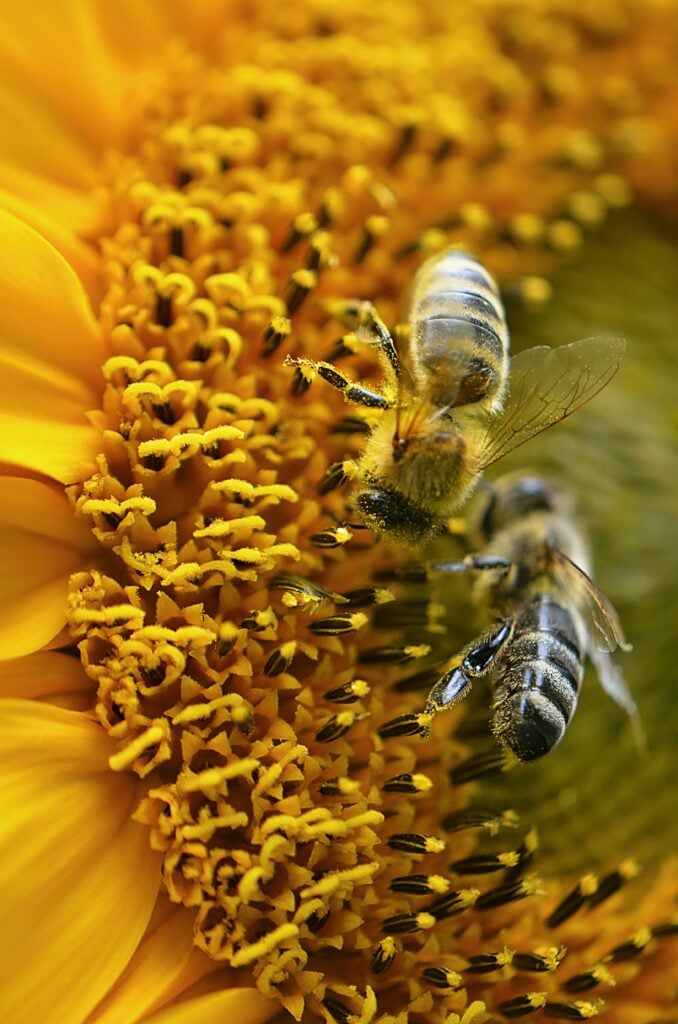
More Pollinator Support Reading
As you can see, there are many ways that you can help save honey bees. By doing your part, bee pollination will continue (hopefully!) forever. Here are a few more articles about bees you might want to read:
- Honey Gift Ideas: The more people who enjoy honey, the higher the demand and the more likely it is that beekeeping becomes a profitable hobby. Vote with your dollar!
- Growing Sunflowers: Sunflowers are not only a great source of food for bees, they also produce food for humans!
- How to avoid bee stings: While we want lots of bees in the backyard, their stings are not so fun. Here are some tips on how to avoid being stung by a bee.
Plant one flower this spring. Choose native plants that thrive without pesticides. Educate children about how pollination works and why bees are vital to our world food supply. Hand them a piece of fruit and make sure they know where it came from.
So, what do honeybees DO all day? A whole lot! Many crops only exist thanks to the help of these busy little insects. Do your part this spring to protect our food sources and these complex, fascinating insects.

Diane is a professional blogger and nationally certified pharmacy technician at Good Pill Pharmacy. She earned her BS in Microbiology at the University of New Hampshire and has worked in cancer research, academics, and biotechnology. Concern over the growing incidence of human disease and the birth of her children led her to begin living a more natural life. She quickly realized that the information she was learning along the way could be beneficial to many others and started blogging and freelance writing to share this knowledge with others. Learn more about her HERE.

